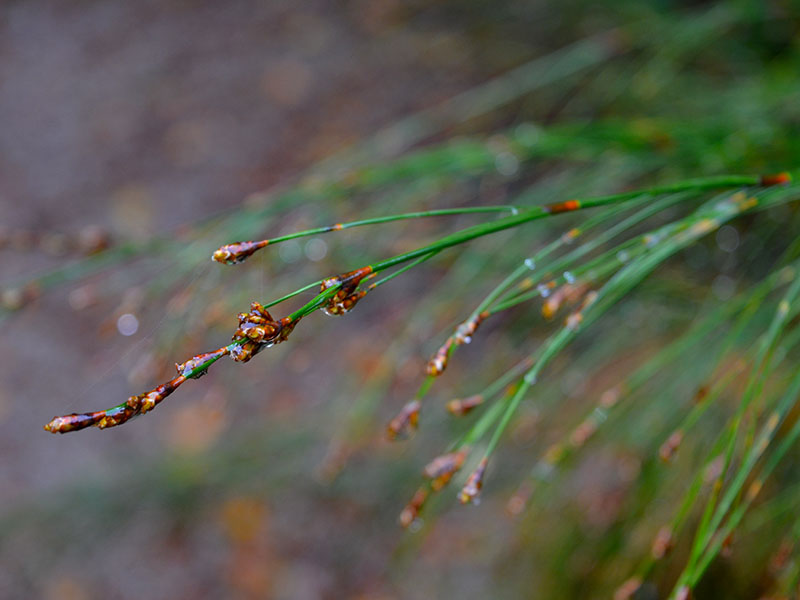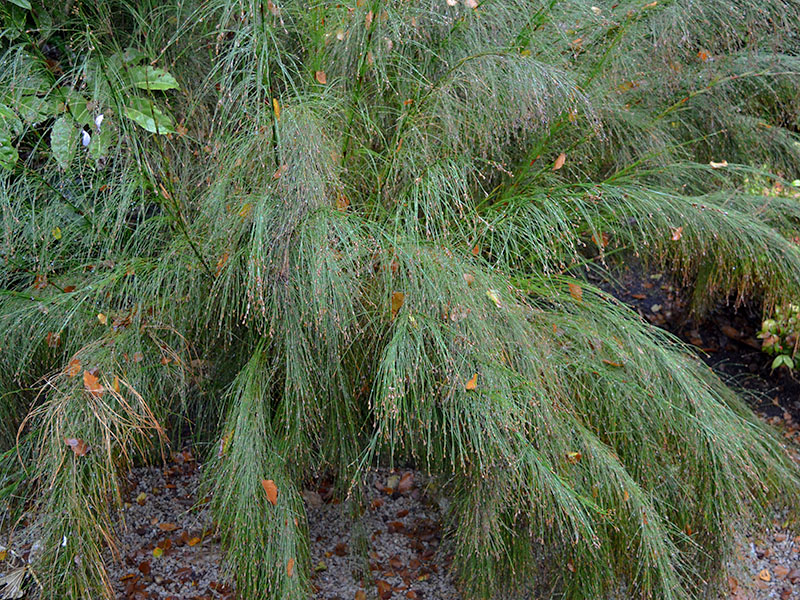
Perennials > Ischyrolepis > Ischyrolepis subverticillata > Ischyrolepis subverticillata
Ischyrolepis subverticillata
Restio, Broom Restio, Dune Restio
Origin: Native to South Africa.
| Family |
| Restionaceae |
| Genus |
| Ischyrolepis |
| Species |
| subverticillata |
| Category |
| Perennials |
| Type |
| Shrub (evergreen) |
| Synonyms |
| Restio ferruginosus, Ischyrolepis subverticillata, Restio microstachys, Restio subverticillatus |
| USDA Hardiness Zone |
| 8 - 9 |
| Canadian Hardiness Zone |
| Requires cold season protection under glass. |
| RHS Hardiness Zone |
| H5 - H3 |
| Temperature (°C) |
| -10 - 1 |
| Height |
| 1.5 m |
| Spread |
| 1.5 m |
Photographs
Description and Growing Information
Flowering Period
| General Description |
| It has a very distinctive growth form with cane-like stems, which have soft green whorls of modified branches at each node. |
| Landscape |
| It can be planted in the garden but will also do well in a pot on a patio or on a terrace. |
| Cultivation |
| Grow in full sun or dappled shade, in moist, well-drained soil. Avoid planting in alkaline soils and plant in a spot with plenty of air movement. |
| Shape |
| Arching and clump-forming. |
| Habitat |
| This species occurs naturally in the Betty’s Bay area from as close as 50 m from the sea to high up in the Kogelburg Nature Reserve where it can be found in full sun or light shade. |
| Bark/Stem Description |
| Stems erect, 1.2 -1.5 m high, thick, terete, purple-spotted, and much branched. |
| Leaf Description |
| Strong upright culms with very decorative feathery foliage arranged in whorls. |
| Flower Description |
| Male and female flowers are produced on separate plants, the female flowers are white, the male flowers greenish-yellow. |
| Fruit Description |
| Shiny brown nutlets. |
| Notable Specimens |
| Glendurgan Garden, Mawnan Smith, Falmouth, Cornwall, United Kingdom. |
| Propagation |
| By division or seed. |

